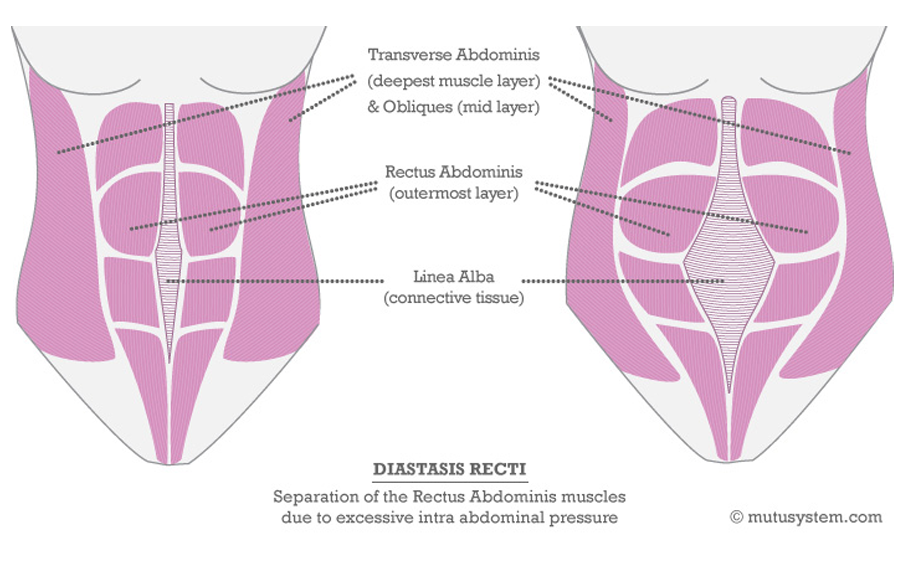

This study showed that the size of DR in non-exercising pregnant women was significantly larger than those found in pregnant women who participated in an abdominal exercise program. Non-exercising pregnant women measured a DR of 38.9mm above the umbilicus, 59.5mm at the umbilicus and 60.4mm below umbilicus while women who completed an abdominal exercise program measured 9.6mm above the umbilicus, 11.4 mm at the umbilicus and 8.2mm below the umbilicus (Chiarello, C). Based on this data, it is extremely important for pregnant and post-partum women to be screened for a DR and begin treatment including appropriate exercise.
During pregnancy and post-patrum, appropriate exercises include training of the Transverse Abdominis (TrA) muscle. One of the most effective ways in which to activate the TrA while pregnant is in the quadruped position (hands and knees). Here you can exhale while feeling like you are using your abdominal muscles to hug the baby. There should be no movement of the spine however the belly will rise and feel supported. The TrA muscle would be utilized in all strengthening exercises when rehabing a DR from quadruped breathing to plank and eventual return to controlled abdominal curls.

Other treatment techniques that are used with exercise to correct a DR are the application of Kinesiotape or the use of an abdominal binder. The Kinesiotape application can provide support where the separation of the muscle is present while still allowing completely free motion. There are various techniques for tape application, all of which can be self applied and worn during an exercise program. An abdominal binder is slightly more supportive than the tape application because it covers a greater area. There are many binders out there, ranging in size and look. A new abdominal binder we have available at CTS is the FITSplint. The FITSplint is able to be worn during pregnancy and post-partum. It can be used during exercise and while seated to provide support for DR and pain in the abdominal region. Both Kinesoptape and an abdominal binder reinforce the physical therapy treatment at home, provide support during daily activities, are cost effective and are easy to use.
If you feel you may have a Diastasis Recti it is important to be screened by a medical professional. There are treatment options available that can prevent current or future pain associated with a DR. Please contact CTS with any questions.